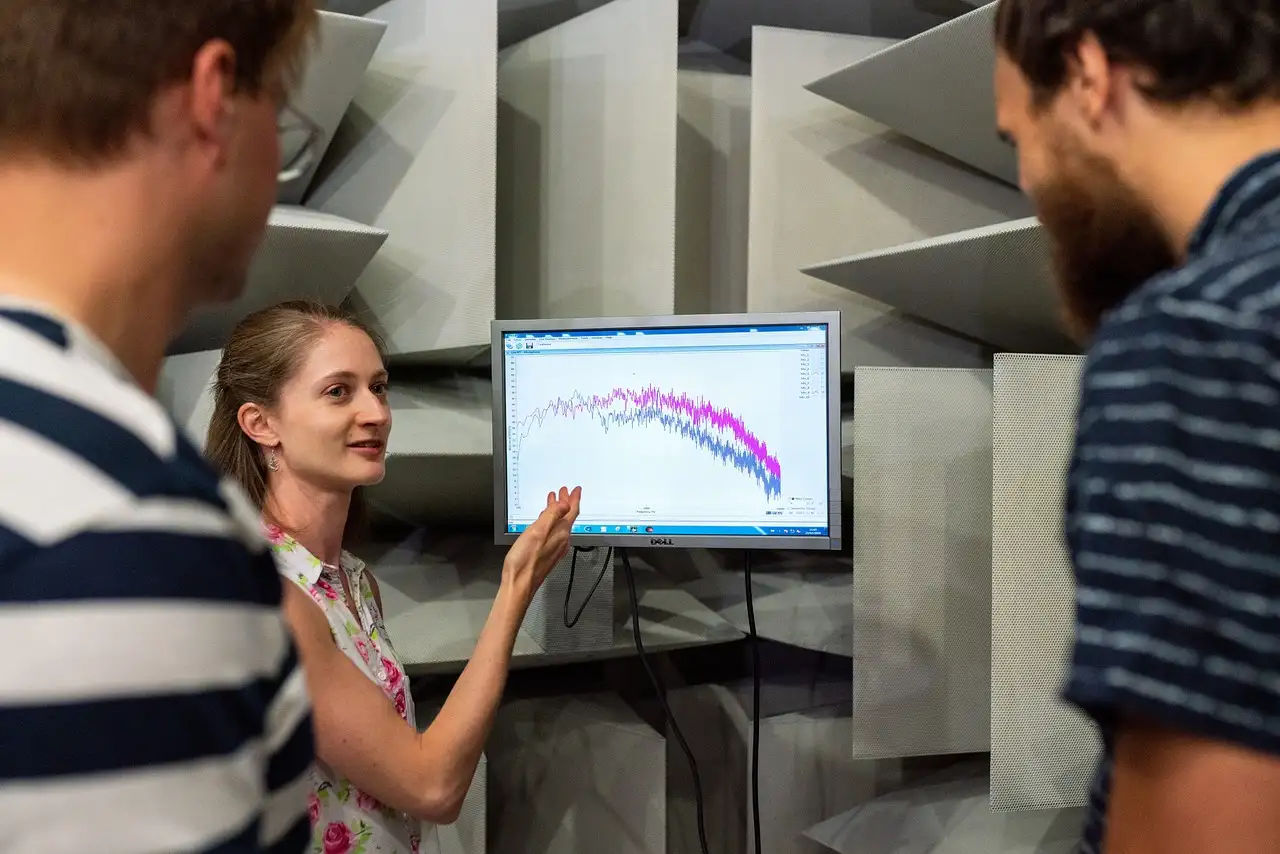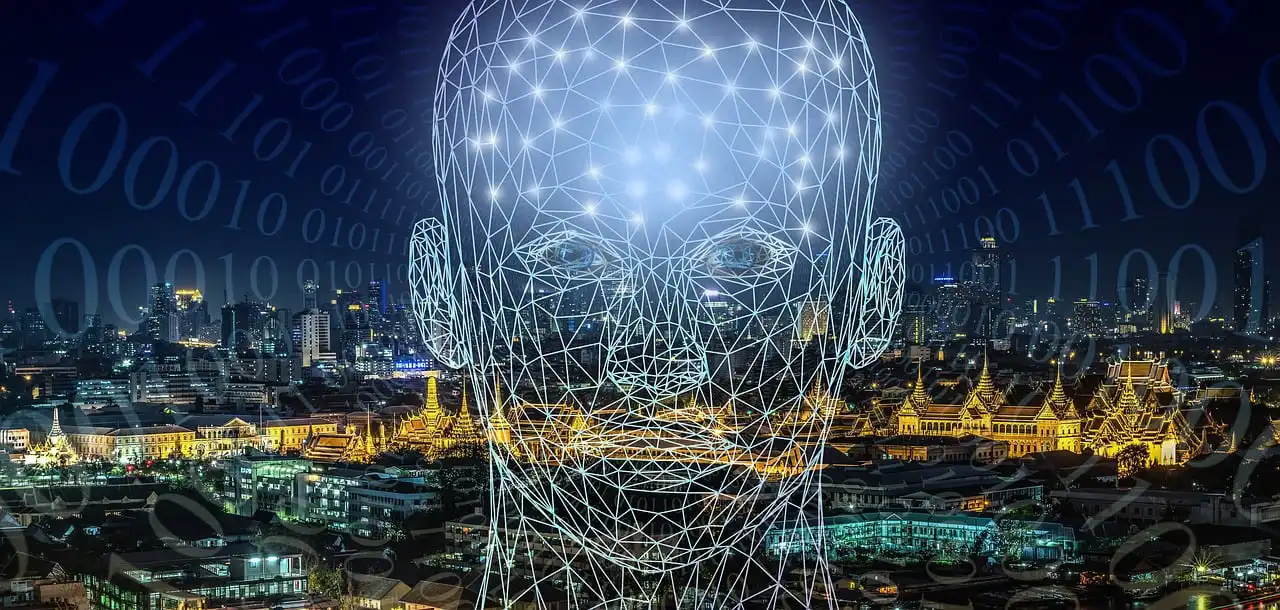With the introduction of ChatGPT-3 and DALL-E2, the majority of investors started showing interest in businesses building generative AI.
Moreover, generative AI is not enough to meet the needs of the AI revolution.
The success of predictive models is relevant to the science fiction future that most customers desire, alongside the widespread adoption of AI.
Progress of Generative AI
After judging information related to different data points, predictive models make informed decisions.
Is this a human or a bot? Is this a mango or a peach? The model is trained under the guidance of a human, who verifies if the outcome is accurate.
The model learns to react distinctly to different scenarios based on the training data it encounters.
Based on what they get from their training data, generative models build new data points.
These models are usually trained in an unsupervised manner, analyzing the data on their own without human input.
Earlier, generative models had more challenging tasks, such as producing textual information that accurately responds to questions and learning to create photorealistic images.
Machine learning (ML) teams have generated foundation models using current computing power.
These generative foundation models have been calibrated over the past few years by ML engineers, who have fed them smaller quantities of annotated data to produce outputs for particular goals.
ChatGPT-3
ChatGPT-3 is the best example of fine-tuning AI. This foundation model is an advanced version of ChatGPT that's trained on large quantities of unlabeled data.
OpenAI has recruited over 6000 annotators to label a relevant subset of data for generating ChatGPT.
Later, ML engineers of OpenAI used such data to improve the model to train it to produce specific & relevant information.
With these enhancing methods, generative models have begun to generate outcomes they were previously unable to achieve, resulting in an extension of functional generative models.
This shows that generative AI has altered the performance of existing predictive AI systems.
Interested in knowing how to implement predictive analytics in your business? >>>> Contact Us
What are the Predictions for Generative AI?
Listed below are the top generative AI predictions for the year 2023.
Content creation will be in a conversational tone.
Specific AI tools use prompts to generate images, while others rely on the conversation to deliver the final product.
ChatGPT has become popular as it provides quick answers to users' queries.
Moreover, a chatbot can have a real-time conversation like a human and respond to the user's queries instantly.
Moving forward, you can expect more AI tools like this.
Conversational AI imitates natural language, which makes it more accessible and human-friendly for users looking for quick answers.
Even though the technology isn't perfect today, it will lead to a revolution in 2023 and beyond, resulting in stronger and more advanced AI chat tools.
With generative AI, businesses will have more opportunities to customize or personalize content.
Based on McKinsey reports, approximately 71% of users want personalization when purchasing.
AI-oriented products will replace many present procedures
White-collar work is another area where this AI concept is sound.
You might have seen how Google is combining generative AI in workspace applications such as Gmail, Sheets, Docs, and so on.
Microsoft is also following the same path with Office 365 apps.
Moving forward, all productivity applications such as Slack, Canva, Asana, MailChimp, and many more will start using generative AI.
These fresh tools will lead to lots of creativity and reduce the stress of office work.
Nowadays, all professionals are familiar with the impact of generative AI on specific jobs or industries. Still, they also accept that it has changed their work as they rely on it.
AI replaced many menial tasks that required valuable time and workforce. McKinsey has listed a wide range of use cases for how businesses use generative AI.
For instance, generative AI can help HRs to recruit the right candidates & automate performance reviews, and review the code for engineers in a couple of minutes.
The goal is to reduce manual tasks with ML and automation to work smarter.
As expected, in 2023, with the further advancement of these AI technologies, you can see a replacement for more outdated work procedures.
Demand for prompt engineers
The introduction of existing technology, such as GPT-3, has opened the door for numerous emerging generative AI tools to create new platforms.
The engineers who want to taste success have to understand the working concept of AI to create more suitable prompts.
This will lead to a rise in demand for "Prompt Engineers" roles in the future as businesses adopt and accept AI tools.
Create Web Apps and Run Websites
You can see multiple tools in the market that can build no-code websites, and this feature will be taken to the next level by generative AI.
In the future, AI will help users create websites & web apps and run both on autopilot.
In short, it will automatically update its code, create & publish fresh content, create an editorial calendar, respond to users, and send follow-up emails.
AI search engines will respond to users' queries quickly
Nowadays, Microsoft and Google are integrating their search engines with AI, allowing users to receive immediate responses to their questions via chat.
Users like this as getting answers from a chatbot in a conversational tone is much better than reading articles on Google.
What is the Difference between Predictive AI and Generative AI?
Both generative AI and predictive AI use artificial intelligence with dissimilar functionalities.
Generative AI can create new content that includes images, music, and text.
It uses deep learning techniques and complex algorithms to produce fresh content similar to the data (aimed for training) it has been fed.
Whereas predictive AI makes use of ML and statistical algorithms to examine data and forecast upcoming events or behaviors.
It learns from past data to find out patterns and forecast future results.
One common thing about these two is that they use ML algorithms, but their goals are different.
Generative AI is predominantly used in industries like fashion, music, and art, while predictive AI is often used in industries like marketing, healthcare, and finance.
Transform Your Business using Express Analytics' Machine Learning Solutions >>>> Schedule a call
Top 10 Use Cases for AI/ChatGPT in Customer Service
To make use of ChatGPT for customer service, it needs to be trained on an interactive dataset for CX.
AI is equally good as the data it is trained on.
Similar to various conversational AI automation tools, ChatGPT requires this training to understand commonly encountered queries relevant to customer service and reply in a human tone and natural way.
Businesses rely on ChatGPT to generate automated responses to user questions, helping them obtain the correct information without human intervention.
Moreover, AI solutions offer 24/7 quick service.
Here are the top 10 use cases of ChatGPT in customer service:
1. Language translation
Provide support to all types of consumers using ChatGPT to help them in different languages.
2. Sentiment analysis
It is trained to analyze, understand, and differentiate the sentiment of customer questions. By looking at customers' emotions, businesses can better enable them to reply in the right way.
3. Immediate customer support
It can provide immediate responses to customer queries and offer 24/7 support.
4. Tracking orders
It can help customers by providing the status of their orders and estimated delivery times, ensuring a consistent shopping experience.
5. Product recommendations
Based on purchase history and consumer preferences, it can provide personalized product recommendations, improving both cross-selling and upselling opportunities.
6. Account management
Customers can get assistance from generative AI about account settings, password resets, subscription cancellations, and other tasks related to accounts.
7. Feedback collection
Customers can engage in conversations with ChatGPT to provide feedback on their experiences, helping companies improve their products and services.
8. Policy & process queries
Consumers can inquire about policies, procedures, and terms of service, receiving clear explanations from generative AI.
9. Booking & reservations
It can handle queries related to booking and reservation, helping consumers in securing appointments, hotel rooms, and flights.
10. Troubleshooting assistance
It can guide consumers through basic troubleshooting steps and assist them in resolving common issues.
What are Real World Applications for Generative AI?
Here are some key real-world applications for Generative AI:
Content Generation
Generative AI can create human-like content such as text, images, and videos. It can be used to generate compelling product descriptions, personalized marketing materials, or even creative storytelling for entertainment purposes.
Virtual Assistants and Chatbots
A generative AI model can power chatbots and virtual assistants, allowing them to engage in human-like and natural conversations. By understanding user queries, these AI-enabled agents offer personalized support and enhance customer interactions.
Creative Design
It is a valuable tool in creative design processes. It can assist in generating unique and innovative designs for products, logos, or visual elements, aiding designers in their creative exploration.
Personalized Recommendations
Generative AI algorithms can analyze large amounts of user data and produce personalized recommendations. This AI helps businesses deliver customized recommendations based on individual interests and behavior, whether they be for music, movies, articles, or products.
Healthcare and Medicine
It finds applications in healthcare, assisting in tasks such as medical image analysis, drug discovery, and treatment planning. It can help identify patterns, generate synthetic medical images, or simulate the effects of drugs on the human body.
Gaming and Entertainment
It can enhance gaming experiences by creating realistic virtual environments, generating non-player characters with advanced behaviors, and even assisting game developers in creating unique game assets.
Fraud Detection
Generative AI algorithms can analyze patterns in financial transactions and identify anomalies that indicate fraudulent activities. By learning from historical data, they can detect suspicious behavior, enabling timely intervention and preventing potential economic losses.
Language Translation
Generative AI models have revolutionized language translation by providing more accurate and contextually relevant translations. It can understand and generate language with improved fluency, helping bridge the gap between different cultures and languages.
How ChatGPT (Generative AI) Improves Customer Service?
ChatGPT is not built for improving customer service, but its chat interface and human-like replies will transform customer communications for the future.
By understanding the customer service operations and functions of ChatGPT, many CX leaders are looking to stay ahead of the competition.
Interested in knowing how to implement predictive analytics in your business? >>> Contact Us
How Does ChatGPT Improve Recommendations?
It has transformed the way recommendations are made, providing valuable improvements in accuracy and personalization.
Here's how ChatGPT improves recommendation systems:
Enhanced understanding
Its advanced natural language processing capabilities enable it to understand and interpret user inquiries with greater accuracy. It can realize nuanced preferences, context, and implicit signals, resulting in more relevant and tailored recommendations.
Personalized recommendations
Generative AI leverages customer data, interests, and past interactions to deliver highly personalized recommendations. It considers factors including past purchases, browsing behavior, demographics, and user feedback to generate custom recommendations that align with individual interests and preferences.
Explaining recommendations
One significant advantage of ChatGPT is its ability to explain the logic behind recommendations. It can offer justifications, highlight related features, or provide comparisons to help users understand why specific recommendations are being made. This transparency builds trust and improves user confidence in the recommendations.
Flexibility and adaptability
It can be effortlessly customized and adapted to various domains and industries. It can be trained on specific datasets and fine-tuned to meet unique recommendation needs, ensuring the system aligns with the particular requirements of companies and their customers.
Collaborative filtering
ChatGPT can leverage collaborative filtering techniques to identify patterns and similarities between users.
How is AI used in Predictive Analytics?
Listed below are some key ways AI is used in predictive analytics:
Enhanced data analysis
AI algorithms can analyze and process vast amounts of both unstructured and structured data to find patterns, trends, and correlations that humans might miss. This leads to generating more accurate predictions and actionable insights.
Improved predictive models
AI-based predictive models can continuously learn and adapt from fresh data, enhancing their accuracy over time. By automatically adjusting to changing patterns and dynamics, these models can offer more reliable and up-to-date predictions.
Automated feature selection
AI algorithms can identify the most relevant features from a dataset that have a significant impact on predictions. This minimizes manual effort and ensures that only the most influential factors are considered, resulting in a more accurate outcome.
Real-time predictions
AI-powered predictive analytics systems can analyze data in real time, allowing businesses to make timely decisions and take immediate action. This is valuable in both dynamic and fast-paced industries where quick responses are critical.
Personalized recommendations
AI-enabled predictive analytics can analyze the behavior and preferences of customers to generate personalized recommendations. This helps companies to deliver customized product suggestions, resulting in enhanced customer engagement and satisfaction.
Apart from these, predictive artificial intelligence can automate multiple tasks within an organization.
The automation tasks can involve the following aspects:
- Data recovery
- Data analysis
- Evaluation of complete performance
Many businesses are using predictive analytics in a variety of areas. A few of the industries involve:
- the tourism industry
- insurance companies
- event management companies
- pharmaceutical industries
- luxury & fashion brands
- the catering industry
AI has transformed the field of predictive analytics, enabling businesses to extract much-needed insights from vast amounts of data.
By leveraging ML techniques and advanced algorithms, AI improves both efficiency and accuracy of predictive analytics models.
Major retailers, including the Casino Group, Monoprix, U stores, etc., use predictive AI algorithms for promotion optimization, POS traffic forecasting, and stock optimization.
Many pharmaceutical companies like Alter Pharma and Bayer are using predictive AI solutions.
AI-powered predictive analytics have been adopted by multinational IT companies such as Cisco, Microsoft, and Oracle.
Transform Your Business using Express Analytics' Machine Learning Solutions >>> Let's connect
New Updates in Predictive Analytics using Machine Learning and Generative AI
Predictive analytics, powered by machine learning and generative AI, continues to progress and transform industries across the globe.
Every day, new updates arrive, pushing the boundaries of what's possible in this field.
The prime update is the incorporation of new algorithms and techniques in predictive analytics models.
Machine learning algorithms, like support vector machines and deep learning neural networks, are becoming more sophisticated and perfect in making predictions.
This lets businesses gain deeper insights into their data and make data-oriented decisions with confidence.
Another update is the incorporation of generative AI in predictive analytics.
Generative AI models can produce fresh data samples that closely resemble the original dataset.
This allows businesses to simulate numerous scenarios and predict outcomes for previously unseen situations.
By leveraging Generative AI, organizations can uncover hidden patterns, generate synthetic data for testing, and increase the overall accuracy & robustness of their predictive models.
Furthermore, advancements in computational power and cloud infrastructure have accelerated the speed and scalability of predictive analytics.
Now, large volumes of data can be processed and analyzed efficiently, enabling real-time predictions.
This empowers businesses to respond swiftly to changing market conditions, optimize their operations, and seize opportunities as they arise.
Additionally, explainability and interpretability have become essential features of predictive analytics.
Researchers and practitioners are actively working on developing techniques to understand and interpret the decisions made by complex machine learning models.
This helps businesses gain trust and confidence in the predictions made by these models, especially in sensitive domains such as healthcare and finance.
Conclusion
The integration of machine learning and generative AI in predictive analytics represents a paradigm shift in how businesses approach data-driven decision-making. As these technologies continue to evolve, organizations that embrace these innovations will gain significant competitive advantages in their respective industries.
The future of predictive analytics lies in the seamless integration of generative AI capabilities with traditional predictive modeling, creating more robust, accurate, and interpretable systems that can drive business growth and innovation.


